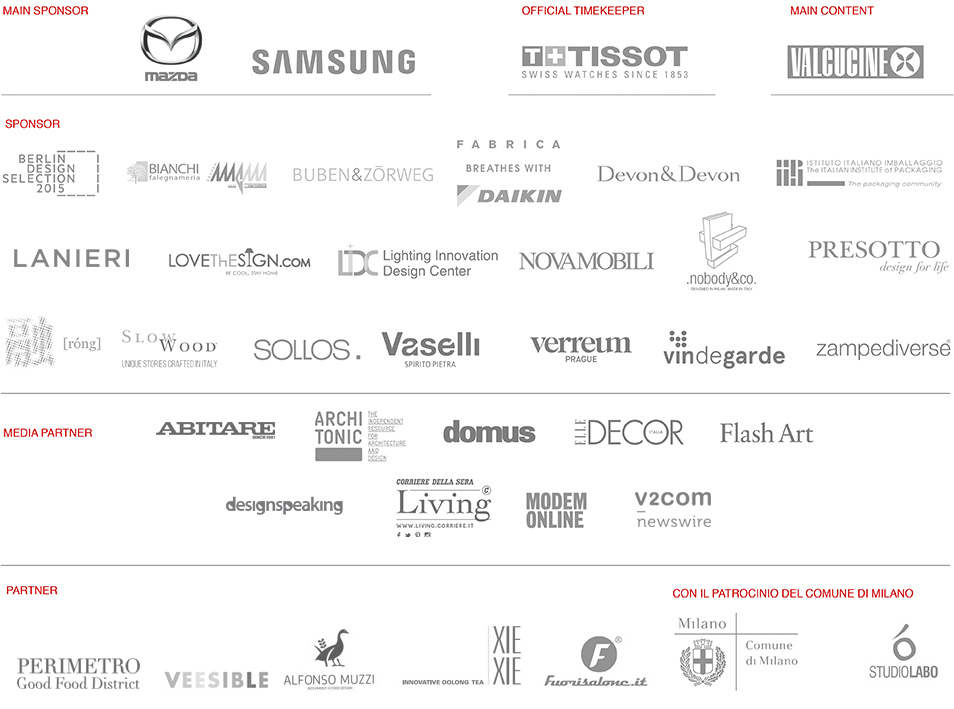In continuation of last year, the Brera Design District presents the second edition of the Design Lessons Award, dedicated to he/she who best interpreted the values standing at the base of the topic chosen. For Project Formation Identity the award goes to Martino Gamper, a designer whose work integrates art, design and handicraft. Gamper distinguished himself for his unique planning ability, for having transferred a deep knowledge of the history of design into his original creations, by translating the project-based culture in a well defined identity.
N.R. - What does the phrase “Design is a state of mind”— which is also the title of a series of exhibitions you did at the Serpentine in London and the Pinacoteca Agnelli in Torino and soon at the Museion in Bolzano—mean to you?
M.G. -The state of mind idea is about the way we look and experience design, in this case in an exhibition, I wanted it to be a very personal experience, but also an active rather then passive experience. I’m interested in how people respond to an exhibition, and what an exhibition can trigger. I wanted to create a narrative around these objects and collections.
N.R. - “Project Form(s) Identity” is this year’s topic, chosen by the Brera Design District to investigate the centrality of planning—which is inherent in design reasoning— when building and consolidating an identity. How important has been the “design culture” in developing your practice through the years?
M.G. -There would not be any design without this design culture that surrounds it; we would have to call it engineering or something else. The creation of identity is a very vital part in what designers do: it creates a curiosity to go beyond the planning. In my case, the search for identity has been part of my practice since the very beginning, and its still very much part of what I do everyday.
N.R. - Considering that there can’t be identity without a project, we could say that formation, meant as research, learning and knowledge, is what brings together the two expressions of this formula. How much influence did your education (for instance as a student of Ron Arad at the Royal College of Arts) have on your actual work?
M.G. -The RCA was an amazing place for me to connect learning and playing. Ron managed to put an amazing mix of designers and teachers together. It was also the place where I rediscovered furniture, and how to better understand my identity as a designer.
N.R. - Speaking of formation processes, what is your relationship with the Italian design history? In your project “100 chairs in 100 days”, you have (also) deconstructed historical works created by major designers: was it your personal way to get rid of history or, on the contrary, did you want to pay a tribute to it?
M.G. - History can be very restricting sometimes, especial in a place like Italy where we have so much of it. I wanted to re-work some of those pieces in a way to digest and lear history by creating something new.
N.R. - Your signature style and approach is easy to recognize, even if you deliberately keep it hybrid and therefore free from categorizations: at times it is called design, at times visual art. What are the limits and opportunities when moving within this frontier? Is there any hierarchy between the two worlds?
M.G. -I see my self as a designer, but my way of working and thinking is very much that of an artist, and I don’t really believe in the art-design-craft hierarchy. My practice is very much about walking in between these restrictions and creates new possibilities. But I also think that creativity and ideas aren’t linked to a specific dimension: I enjoy working with both art and design— autonomous sphere of creation and the culture of mass production—in parallel; they both teach me something new about the world everyday.
N.R. - Finally, what is your relationship with the territory? You were born in Merano, now you live in London, where you also studied; before that, you went to the Academy of Vienna and you also lived in Milan, where you had a two year experience at the studio of Matteo Thun. What is the place you call home? What is your relationship with Milan and the Brera district in particular?
M.G. -I live and work in London, and have lived in many different cities and places, but real home is in the mountains, the other places are transitory houses. My relationship with Milan is very much about love and hate, just like that of the Milanese people in general: they love their city but also loath it. And Brera is of course a very special place for me in Milano.
DESIGN IS A STATE OF MIND
“Design is a state of mind” is the title of the latest exhibition curated by Martino Gamper; indeed, it could also work as the caption for this year’s edition of the Brera Design District, which aims at exploring the potentials of a “design approach” to different fields such as art and architecture.
“Design is a state of mind” opened last March at The Serpentine of London, before moving to the Pinacoteca Agnelli of Turin and finally to the Museion of Bolzano (opening on June 12th). The exhibition depicts the history of design objects and their impact on our lives, with a wide selection of shelving systems, from 1930 to present days. “Perfect design does not exist, there is no über- design,” says Gamper about his project. “Objects can talk to us. Some can be more functional than others, but the emotional attachment is something personal. My exhibition shows an intimate way to collect objects – these are pieces telling us a tale.”
